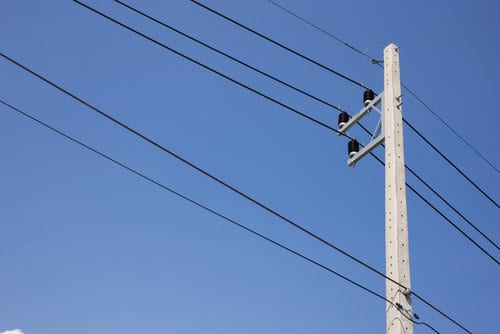
Following on from the article Cost reflective tariffs will do little to reduce network costs, although it is important to apply a demand charge to a household’s demand at the time of the network peak – and not to their monthly peak demand – there are some real-world caveats that need to be taken into consideration.
Firstly, applying the demand charge to a single annual network peak is likely to lead to ‘bill shock’ for some households. In a particular year a household may, for some reason, have unusually high demand during the network’s annual peak. A fairer approach, that takes into account that household’s historical contribution to the size of the network, would be to use the network’s five (or more) highest demand peaks in that year. The household’s annualised demand charge could be based on an average during these peak periods.
Secondly, networks are not just a static piece of equipment, but themselves have characteristics that change over time in the short term. As network demand increases, components such as transformers heat up, and it is the heat build-up that eventually results in a capacity constraint. Thus, it is not so much an instantaneous peak that limits the network but more the ‘area under the curve’ that results from the peak demand and the time over which it occurs. In this case, a price signal should also be directed prior to the peak – which will not only help to pre-cool transformers, but should also help to direct demand to later in the day, when it is cooler.
Thirdly, networks need to signal to households a period over which the demand charge may be applied. For a given section of the network, it should be possible to identify a period during the day (say 5 hours) that spans each of the network’s likely demand peaks.
These three caveats appear to transform an annual demand charge into more of an Averaged Critical Peak Price tariff – but one that targets the household’s average demand preceding and including the times of a limited number of the network peaks. Depending on the size of the demand charge, households may wish to be notified when a critical peak period is about to occur.
From the household’s point of view, this approach should be no more complicated than the demand charges currently available. The chart below shows the network’s annual peak demand day for an average household, as well as the summer average.
As is currently the case, the household would only be presented with a ‘demand charge window’ during which the demand charge may be applied – for example only in the summer months. If the peak was expected to occur in the 6pm to 6.30pm period, the ‘window’ could be fairly broad – from 3.00pm to 8.00pm (in order to capture a demand peak at a different time and to spread any demand response over a wider area to help flatten the peak). This sets the price signal that the household ‘sees’. However, the ‘demand charge period’, which determines the cost faced by the household, would only be applied over a shorter time and to an average of the household’s demand, for example from 3.30pm to 6.30pm.

All of this discussion relates to the structure of the tariff, and doesn’t take into account what is an equally (or more) difficult issue – that of assigning responsibility for sunk costs, which in part determines the size of the different tariff components.
It also doesn’t take into account the need to design tariffs that households will not only respond to but will want to take up and keep. Recent work by the CSIRO has highlighted householders’ preference for a rebate rather than a penalty – in which case the demand charge above could be replaced with a reward based on the extent of demand reduction.
This all means that although the above tariff proposal shows promise, it is just one among many that should be added to the mix!
Rob Passey is a Senior Research Associate at the Centre for Energy and Environmental Markets (CEEM) at the University of NSW, Policy Analyst at the Australian PV Institute and Senior Consultant at IT Power (Australia).
Navid Haghdadi is (still) an (excellent) PhD Candidate at CEEM UNSW.








